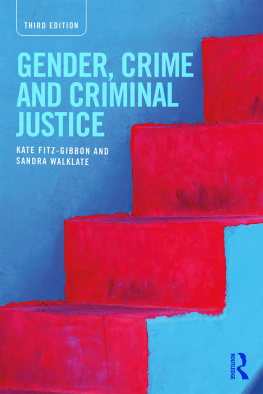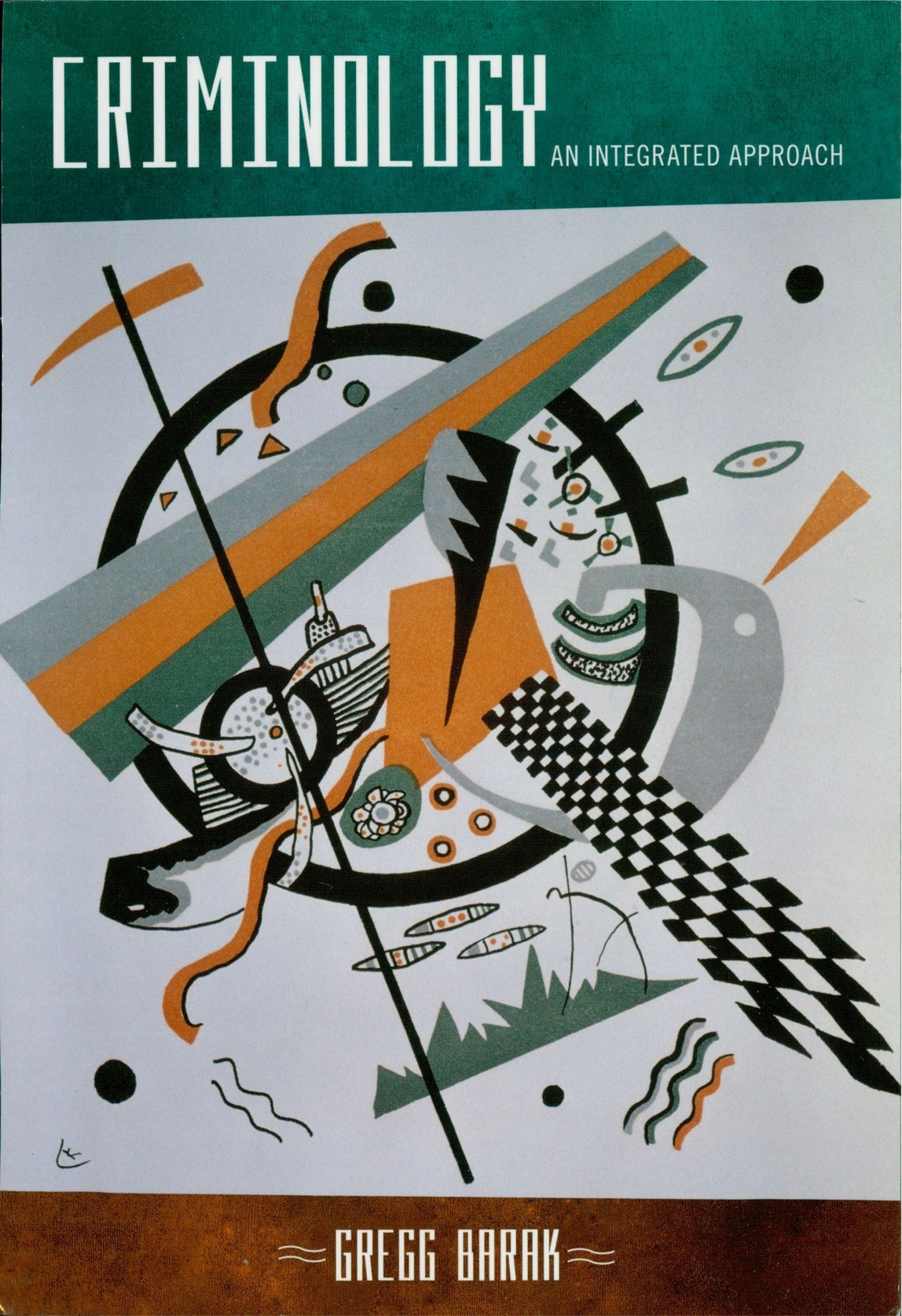Acknowledgments
After four decades of doing criminology there are far too many persons who have influenced my criminological journeys to acknowledge. In terms of my integrated journey I would like to thank and acknowledge three personsBruce Arrigo, Stuart Henry, and Paul Leightonfor their conversations and exchanges of ideas. Over the years, each one of them has helped to sustain and nurture my enthusiasm for integration. As for the writing of this book, there are some other people that I wish to thank.
First and foremost, I want to acknowledge Robert Bohm and Lynn Chancer. Out of friendship and loyalty they both had the misfortune of reading the first draft of chapters 1-10, which I compulsively knocked out in less than six months. Much of what makes this book work was still in my integrated mind and not in the premature text that Bob and Lynn read. However, thanks to their criminological imaginations they could see where I was headed. What is more, they had to endure pages of barely coherent ramblings and poorly constructed sentences I had struggled to spew out at much too fast a pace. Their critiques used together, whether or not they always agreed, was exactly what this author needed to make the manuscript jell the way that I believe it has. All of their comments were taken to heart and mind and I believe that I have tended to their criticisms/suggestions on virtually every critical point raised. In short, this text has benefited enormously from Bob and Lynn and I owe them each a debt of gratitude. I hope that they are as pleased with this final product as they were critical of their first reads.
Next, I would to thank a former graduate assistant of mine, Lisa Kruse, who did much of the library and Internet searching and retrieving of material for inclusion in this book. Without Lisas pursuit of the latest data and relevant analyses, this book would not be as timely as it is. I would also like to extend thanks to the graduate students in my Winter 2008 theory seminar for their general discussion and especially for their collective reading and feedback on chapter 11, Integrated Models in an Age of Globalization and Transdisciplinarity. Once again, I wish to thank Eastern Michigan University for release from my teaching duties for the Fall semester 2007, in order that I could devote undivided time toward completing this manuscript. Lastly, there is Alan McClare, a vice president at Rowman & Littlefield, whom I would like to thank for his support of a variety of academic writing adventures over the past five years, including the Rowman & Littlefield/Lexington joint book series, Issues in Crime & Justice, of which I am series editor. Finally, I would especially like to thank Elaine McGar-raugh, production editor, at Rowman & Littlefield, for her splendid yeoman services.
Gregg Barak, Ann Arbor
Summer 2008
Other Books by Gregg Barak
In Defense of Whom? A Critique of Criminal Justice Reform
Crimes by the Capitalist State: An Introduction to State Criminality (Editor)
Gimme Shelter: A Social History of Homelessness in Contemporary America
Varieties of Criminology: Readings from a Dynamic Discipline (Editor)
Media, Process, and the Socinl Construction of Crime: Studies in Newsmaking
Criminology (Editor)
Representing O.J.: Murder, Criminal Justice and Mass Culture (Editor)
Integrating Criminologies
Integrative Criminology (Editor)
Crime and Crime Control: A Global View (Editor)
Class, Race, Gender, and Crime: The Social Realities of Justice in America
(First and Second Editions, coauthored with P. Leighton and J. Flavin)
Violence and Nonviolence: Pathways to Understanding
Violence, Conflict, and World Order: Critical Conversations on
State-Sanctioned Justice (Editor)
Battleground: Criminal Justice (Editor)
A two-volume encyclopedia
About the Author
Gregg Barak received his Ph.D. in criminology from the University of California at Berkeley in 1974. He has held seven university appointments as a faculty member, including Visiting Distinguished Professor and Scholar in the College of Justice and Safety at Eastern Kentucky University in 2004, and three positions as a department chair.
Barak is the recipient of the Life Time Achievement Award from the Division of Critical Criminology of the American Society of Criminology, 2007; the Fellow Award from the Academy of Criminal Justice Sciences, 2003; and the Ronald Collins Distinguished Award for Research and Creativity, 2006; from Eastern Michigan University where he currently serves as a professor of criminology and criminal justice.
Among Baraks current writing projects for Rowman & Littlefield are the third and second editions, respectively, of Class, Race, Gender, and Crime: The Social Realities of Justice in America (2010) and Violence and Nonviolence: Pathways to Understanding (2011). Barak is also their series editor for Issues in Crime & Justice.
1
Criminology and Criminal Justice: An Integrated Perspective
Throughout time students and scholars of crime and crime control, like many ordinary people, have differed over what should be counted as a crime. Criminologists, as members of their professional academies, have also disagreed about the boundaries of inquiry or about what is fair game for criminological study. Nevertheless, between the late 1700s and the 1920s, most criminologists took a very narrow or legalistic approach to crime and punishment restricting their studies mostly to juvenile delinquents, petty adult offenders, and other street criminals such as burglars or prostitutes. Not until the 1930s did criminologists begin to formally debate the merits of legal versus cultural versus social definitions of crime. Shortly thereafter, the field of white-collar crime was legitimated as a worthy field of investigation. Only with the rise of the postindustrial society and the emergence, at home and abroad, of the critical school of criminology in the 1970s, did criminologists finally incorporate into their examinations alternative definitions of crime and punishment, such as those involving social injuries, analogous harms, or violations of human rights. For example, it was not until the twenty-first century that the crime of genocide was finally to be taken up seriously with a rightful place within the scope of criminological inquiry.
Since the 1960s not only have mainstream criminologists joined critical criminologists in studying such crimes as racism, sexism, and other forms of exploitation in relation to the practices of crime and social control, but they have also integrated corporate, nation-state, and state-corporate crime into their domains of white-collar investigation. At present, philosophical, legal, and political cases are made worldwide for the development of a supranational criminologyor the study of international crimesand for a global criminology that transcends national sovereignty, state criminology, and east/west, north/south relations or dualities. At the same time, the critically prescriptive policy initiatives that have emerged over the past thirty years as alternatives to the various wars on crime such as the practices of restorative justice or the growth of problem-solving courts, have been less about reducing the disparities in the applications of crime control or the rule of law as one key to reducing crime or improving the quality of criminal justice administration. In addition, these prescriptive calls have been about the expansion of the substantive rights of due process or about the global incorporation of human rights and the struggle for social justice.






